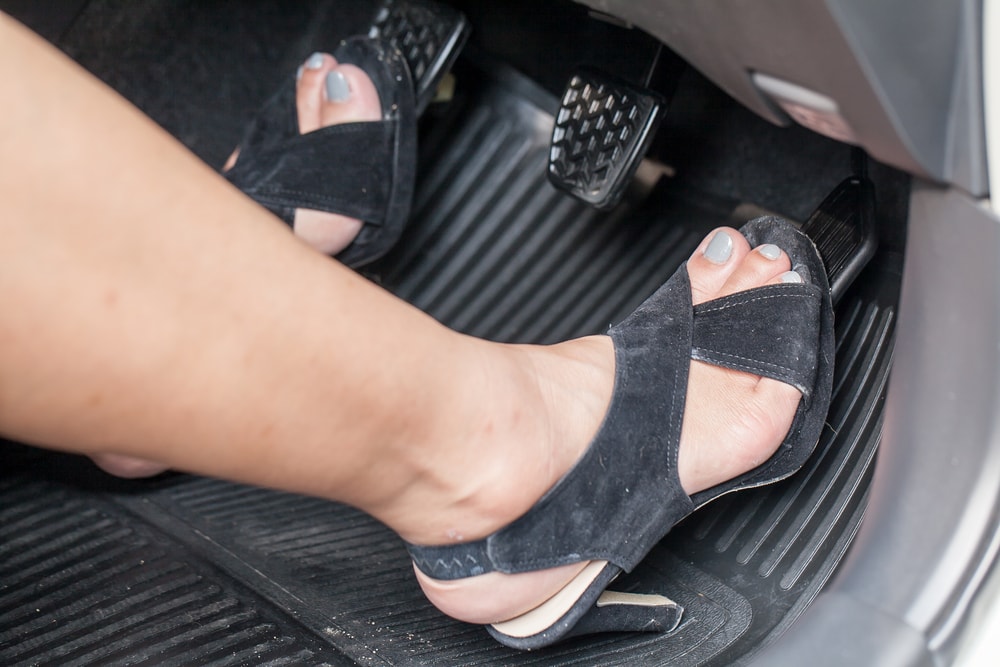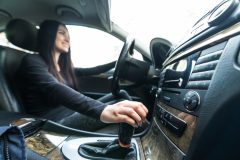How to Drive a Stick Shift: The Quickest and Easiest Way for Newbies
What if you had to learn to drive all over again?
For many California residents learning how to drive a stick shift, that’s often how it feels. You may have mastered all the rules of the road and secured some great car insurance, but if you’ve only driven automatic cars, then your first manual vehicle may make you feel like you’re back in driver’s ed.
That doesn’t mean you won’t be a quick learner, though. No matter how much of a newbie you are, this guide will help you learn how to drive stick shift!
Understanding the Stick Shift Car’s Anatomy
When you’re first learning how to drive a manual car, you need to study the actual shifter – the level that controls your car’s gears. On the top of each shifter is a diagram that will tell you how and where to move the lever while driving. Take your time memorizing this diagram and practicing shifting. It’s possible to do this in your driveway or garage. This will make actually driving on California’s roads easier while giving you peace of mind ahead of your next trip because you will have had some practice shifting in a safe setting first.
Preparing to Drive a Stick Shift
If possible, you should bring a passenger who is experienced with manual automobiles on your first few drives. They’ll be able to offer you tips and tricks that can help you settle in and make the most of your new vehicle.
Also, such a passenger can answer your questions as you drive. That’s great because if you have a time-sensitive question while driving and don’t have someone to ask, you might end up having to pull over somewhere safe and look the answers up on your phone.
Commencing the Journey
When you’re ready to drive, your first challenge will be getting out of the driveway. Begin by disengaging the parking brake and holding your right foot down on the brake pedal.
Next, hold your left foot down on the clutch and start the car. Considering that manual cars start in neutral and there is no actual park position on the gear, this can take some serious getting used to for those who have only driven automatic vehicles in the past.
Shifting to First and Letting Off the Clutch
Now that you’ve started the car, the next step is to shift into first gear. Keep pressing down on the clutch and move the shifting lever into first gear. (It should be in the upper left but check your diagram to be sure.)
After that, take your foot off the brake and place it over the gas pedal. Now, you can start gently letting off the clutch. As the car reaches its intended friction point, you need to ease down on the acceleration. Just like that, you’re driving, but you’ll need to master the other gears to stay safe behind the wheel.

Second Gear and Beyond
With the car accelerating, wait until the clutch is fully released. With the car coasting, it’s now time to shift it into second gear.
When you’re ready, you need to put your foot back on the clutch and quickly shift into second gear. “Quickly” is the operative word here: Take too much time and the car might stall out! For newbies, the hardest part of this process is perfecting the timing of clutch, shift, and release clutch. Going too slowly can cause stalling, but going too fast can cause the engine to race.
This technique will allow you to shift into all other gears as your car builds speed. Incidentally, you should treat all of this like you are practicing driving for the first time. By perfecting shifting gears in empty parking lots and on abandoned roads, you can avoid the stress of having to learn everything on California’s busy highways and interstates!
The Art of Braking
The good news is that braking a manual car is basically the same as braking an automatic one. Whenever possible, start slowing down well ahead of your actual stop. One difference, however, is that you may wish to leave a little more space ahead of you than when you previously drove an automatic.
The reason for that is that newbies often need a little extra time and space to get the car back into gear. By going ahead and giving yourself some extra room before you stop, you can make it easier to get going again.
How To Know When To Shift Gears
Your car’s manual may specify the recommended speed ranges for each gear. However, you can use the guide below to know roughly when it’s time to shift into other gears.
Typically, first gear is reserved for going no faster than 10 miles per hour. Second gear ranges from 5-25 miles per hour, while third gear is for 15-45 miles per hour. Meanwhile, fourth gear is for going 30-65 miles per hour, and fifth gear is reserved exclusively for traveling 60 miles per hour or faster.
Get the Best Manual Car Auto Insurance Today!
Now you know the quickest and easiest way for newbies to learn how to drive a manual car. However, do you know who offers the best protection when it comes to insuring a manual car?
Here at Cost-U-Less, we know there is nothing quite like riding California’s roads using a stick shift. We’re here to protect both the ride and the rider. When you’re ready to get the protection you deserve, just give us a call at (800) 390-4071. If you don’t have time for a phone call, you can get a fast and free car insurance quote online. Finally, drivers who want a more personal customer experience can find a nearby office and give us a visit!



